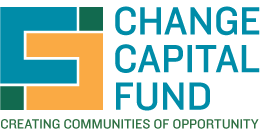CCF appreciates MDRC’s final evaluation report and the feedback we have received as part of a formative evaluation of our first cycle (2014-18).
View the MDRIC Final Evaluation Report
CCF’s goal is to build the capacity of community anchor organizations to increase economic mobility among low-income people living in high-poverty neighborhoods. Our approach is to provide flexible funding combined with technical assistance to enable our grantees to use data to set their directions, improve their programs and, ultimately increase the scale of effective efforts.
CCF is undertaking this work at an inflection point in the community development field, a time when the purpose of community development is, perhaps, not as well understood as it was when CDCs were the developers of last resort in a city literally scorched by disinvestment.
CCF’s first four-year cycle reaffirmed our premise that these organizations, which combine housing, organizing and services, are meaningful change agents in their communities. CDCs:
- dramatically improve living conditions for low-income residents through the provision of affordable housing and neighborhood investments;
- increase economic mobility through education, social services and workforce programs; and,
- empower residents, giving them a voice in determining the fate of their communities and citywide policies through community engaged planning and organizing.
The findings of the first cycle affirm our decision to focus on building grantees’ performance management capacity. At the outset of the first cycle, each of our grantees was tracking data – sometimes the same information – in multiple systems without being able to use it to analyze their overall success. As MDRC’s report confirms, with CCF funding and technical assistance, our grantees have built systems and altered their internal practices and culture to become more deliberate learning organizations: able to more critically evaluate their own results across programs and able to use this information to improve their programs and to demonstrate their success. This capacity helped the organizations win new funding to grow. The four organizations have raised over $21 million in new funding in their first four years and both the number of people served and the outcomes improved over the four-year cycle. In some case, new streamlined, cross-program data systems generated efficiencies that allowed staff to focus more time on services rather than data entry.
An insight gained through the evaluation and practice is that improving grantees’ ability to use data strengthened their ability to partner. The report cites examples of St. Nicks and New Settlement reviewing data together with their school partners, causing the schools to increase their investments in the partnership and creating a virtuous cycle of increased data sharing enabling more children to be served more effectively.
We learned that the work of honing performance management skills is more labor intensive, more expensive, and more time consuming than we initially believed. We changed the way we provide technical assistance to enable the organizations to work individually with quality consultants. That internal work, along with their ability to hire full-time evaluation staff, generated the majority of the internal capacity improvements. Thus, our new cycle will see more streamlined application of this approach.
A meaningful, unexplored question is which services are most effectively delivered by CDCs as opposed to city-wide, regional, sectoral or other types of nonprofit organizations. That is not a question which MDRC investigated though CCF gleaned some insights:
- In addition to housing development, our grantees were effective, knowledgeable housing advocates. Several innovative citywide housing policies legislated during the four year cycle were spearheaded by CCF grantees, for example, the Right to Counsel Campaign and anti-harassment provisions to protect tenants. These organizations have knowledge and credibility in the housing policy arena shared by few other NYC nonprofits.
- During the course of the CCF initiative all of our grantees engaged their communities in major planning efforts, some in response to planned rezonings or other major land use changes, demonstrating their critical role in empowering residents to shape the future of their neighborhoods.
- Educational services stood out as a high-impact intervention. CHLDC and NSA have developed public schools and college access programming with extraordinary success rates. A pilot afterschool program at St. Nicks demonstrated dramatic results in improving reading.
- In the workforce sector, grantees’ greatest successes related to their roles as on-ramps to effective training. FAC recruited and then helped place underserved residents of public housing in quality sectoral training. They created remedial classes to enable participants to pass threshold requirements to employment programs where they went on to achieve the same success as other participants. Similarly, CHLDC provides recruitment, case management, and retention services for a Carpenter’s Union Apprenticeship program.
- Grantees report that the connections they establish with residents through provision of direct services strengthen their organizing and advocacy efforts.
As the report notes, grantees value CCF’s flexible, multi-year funding that enables organizations to become more data driven, a rare niche in the funding community. CCF received 34 proposals to join our initiative in the second round and we turned down many worthy proposals. We think that many more place-based nonprofits would benefit from this kind of investment and are looking forward to continuing our work with our first cohort and four new grantees.
